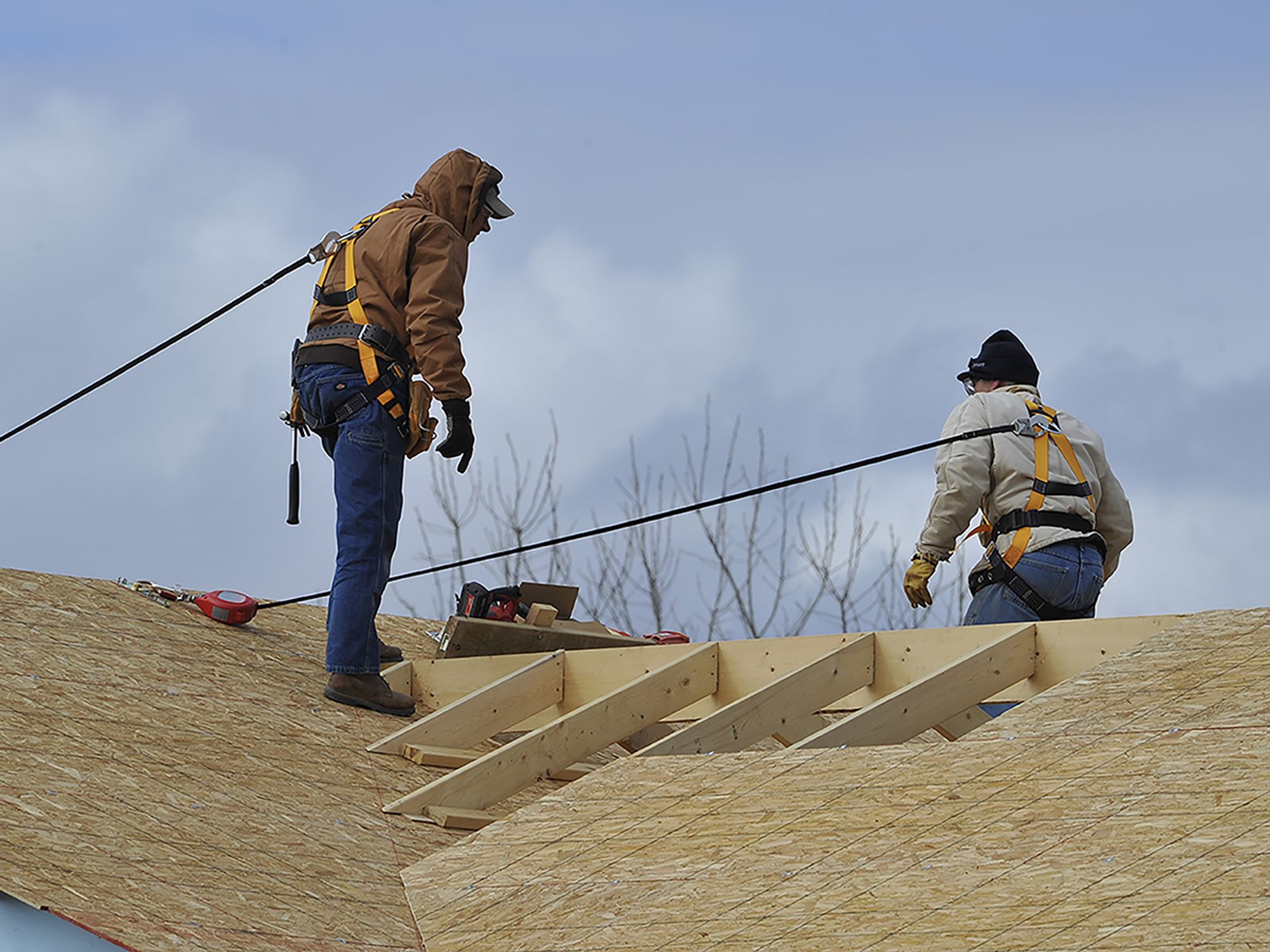Protect workers in residential construction with guardrails, safety nets, or fall arrest systems

- Employees must be protected from falls during residential construction work.
- At least one fall protection method should be used. If employers find the conventional fall protection systems infeasible, employers should review whether a change in work procedures could eliminate or reduce fall hazards.
- OSHA does not expect home builders to erect scaffolds around the entire perimeter of a house, or to take other extremely burdensome measures during residential construction.
Employers engaged in residential construction work must protect employees from falls of six feet or more to lower levels using one of these three conventional fall protection systems:
- Guardrail systems
- Safety net systems
- Personal fall arrest systems
The exception to selecting one of these methods would be if another provision in 1926.501 provides for an alternative fall protection measure.
The Occupational Safety and Health Administration (OSHA) recognizes that some employers may find that it is infeasible or would create a greater hazard to provide and use conventional fall protection systems to protect employees. In these situations, OSHA suggests that employers review their building methods to determine if a change in work procedures could eliminate or reduce fall hazards.
There is a presumption that it is feasible and will not create a greater hazard to implement at least one of the above-listed fall protection systems. Accordingly, the employer has the burden of establishing that it is appropriate to implement a fall protection plan which complies with 1926.502(k).
If an employer can demonstrate either infeasibility or greater hazard, it must implement alternative safe work practices, such as requiring work to be performed from ladders, scaffolds or other types of work platforms and prohibiting the practice of standing on the top plate of the walls to set roof trusses to the walls.
OSHA is aware that some builders assemble the roof system on the ground, either partially or entirely, and then lift it into place. OSHA would expect any fall protection plans developed to explain why such measures could not be implemented when other builders find them to be feasible alternatives.
OSHA believes that employees can be protected with conventional fall protection systems in virtually all situations involving residential construction work, but there may be some limited situations where the use of conventional fall protection systems is infeasible or would create a greater hazard. In those cases, OSHA has established a regulatory mechanism (fall protection plan) through which an employer who satisfies the pertinent criteria must implement a fall protection plan instead of providing conventional fall protection. While OSHA encourages creative solutions, OSHA does not expect employers (home builders) to pursue measures which would make their work unprofitable.
A number of devices are available for use as attachment points for fall arrest equipment, and employers must document why using such equipment is infeasible or creates a greater hazard. On the other hand, OSHA believes it would be unreasonable to expect the home builder to, for example, rent a crane when the home site is difficult to access or when the home builder has only a single roof to raise.
OSHA does not expect home builders to erect scaffolds around the entire perimeter of a house, or to take other extremely burdensome measures such as erecting separate structures and stringing a lifeline to use as an attachment point for personal fall arrest equipment. These measures would be considered infeasible.
